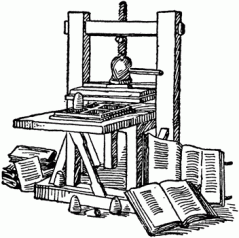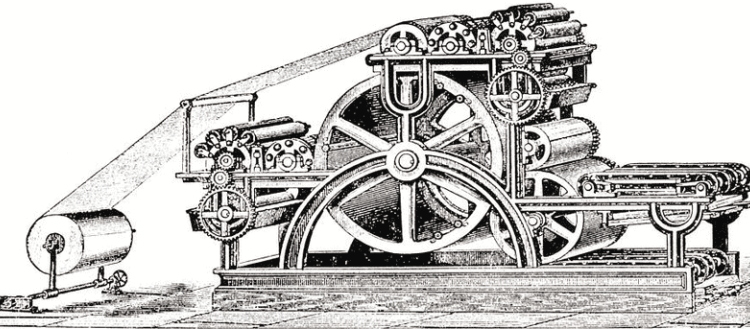The world is full of signage displays in the 21st century. Even in “3rd World” countries, there are lots of signs telling you where to go or marking stores or advertising. And while most of us may give passing thought to sign makers and printing, that’s probably the extent of your thought on the subject.
Recapping the previous two articles on the brief history of signs, we’ve now covered what they were used for and the standard media (wood) ones were made of up through electrical and neon in the past 100 years or so, hopefully this is somewhat interesting – it must be or you wouldn’t be reading this! – And you’re getting some interesting info. Today I’m going to cover the history of printing press and how it eventually came to be integrated into graphic visuals.
Types of Printing: How Printing Started with Gutenberg’s Movable Type to Improvements by William Bullock
Letter Pressing on Clay Tablets
Around 3000 BC or so, the Mesopotamians created cylinder seals that had alphabet characters on them for impressing the letters into clay tablets. Many of these beautiful tablets still survive to this day. The Chinese and the Egyptians used stamps and blocks to print various images, while in Egypt, Europe, and India, printing on cloth and papyrus was done rather than on clay tablets.
Printing from Cloth to Paper
In the 1400’s or earlier, sign makers from Europe shifted from imprinting on cloth to paper, though initially blocks were still used for pressing even on paper. However, in 1439, a German fellow by the name of Johannes Gutenberg created the first commercially viable movable type.
The Gutenberg Printing Press
 While movable type is generally ascribed to Gutenberg, the Chinese had developed it as early as the 11th century and the Koreans in the 13th century. While Gutenberg gets the glory for “creating” movable type in Europe, it is likely that it was being simultaneously developed all over Europe by others as well.
While movable type is generally ascribed to Gutenberg, the Chinese had developed it as early as the 11th century and the Koreans in the 13th century. While Gutenberg gets the glory for “creating” movable type in Europe, it is likely that it was being simultaneously developed all over Europe by others as well.
Regardless, in 1455, Gutenberg printed what is known as the Gutenberg Bible, and suddenly impressing of books exploded in Europe, paving the way for the Renaissance and the increase of knowledge and wealth in the West.
What is not typically known about Gutenberg, though, is that he made improvements in the type metals which affected the quality of the print, and also invented oil-based inks which replaced the less durable water-based inks that had been used previously. He also introduced colored inks.
Printing and Publishing
Printing as a profession spread rapidly throughout Europe in the 16th century, and by 1539, the first press was set up in North America in Mexico City by an enterprising Italian, Juan Pablos. It took another 100 years before one was brought to Boston by Elizabeth Glover, whose husband died on the voyage the press was on. She established the publishing house still known as The Cambridge Press.
Steam-Powered Press
The print technology remained essentially the same with minor improvements until the early 1800’s when Friedrich Koenig invented the steam-powered printing press. Up until this time all presses were manually operated, and the top speeds were around 250 pages per hour.
The Rotary Press Printing
The next improvement was the rotary press machine, invented about 1847 by R.M. Hoe and improved on in 1863 by William Bullock. It allowed rolls of paper, plastic, or cardboard to be printed continuously and made high speed high output printing possible. This type is still in use today in many industries including the sign industry.
That’s about all I can fit into Part 3, so in the next article, we’ll cover more of the evolution of printing press including the improvements in printing into the 20th century and its influence in sign makers, where today they are more printed than built or painted now.
Find part four here: www.visigraph.com/signs/sign-makers-a-history-of-signs-and-printing-part-4/
On the other hand, if you are looking for a sign maker online that is capable of making custom business signs for indoor or outdoor, with materials that include wood, plastic, aluminum, or others, go to this page.
Popular Posts:




